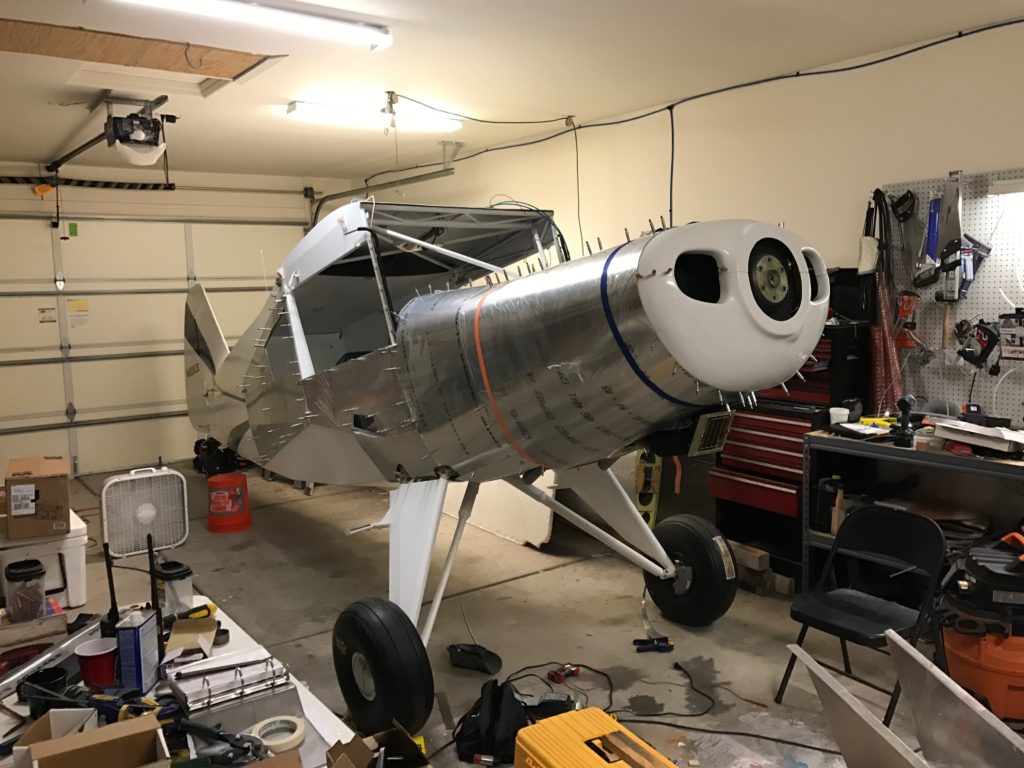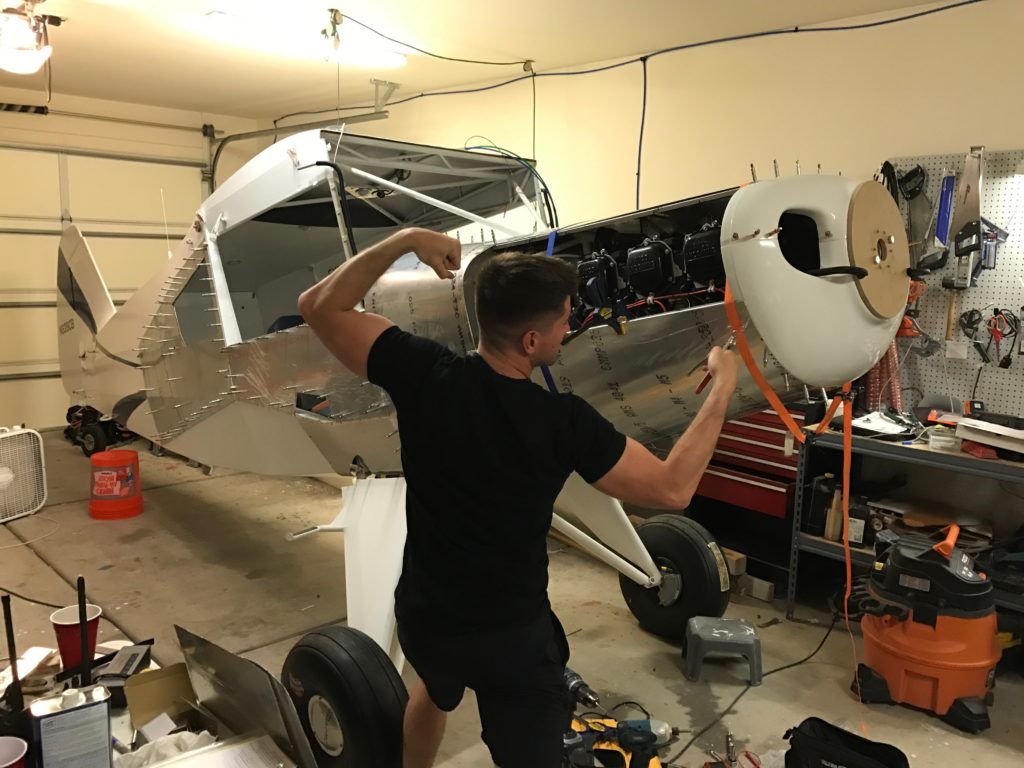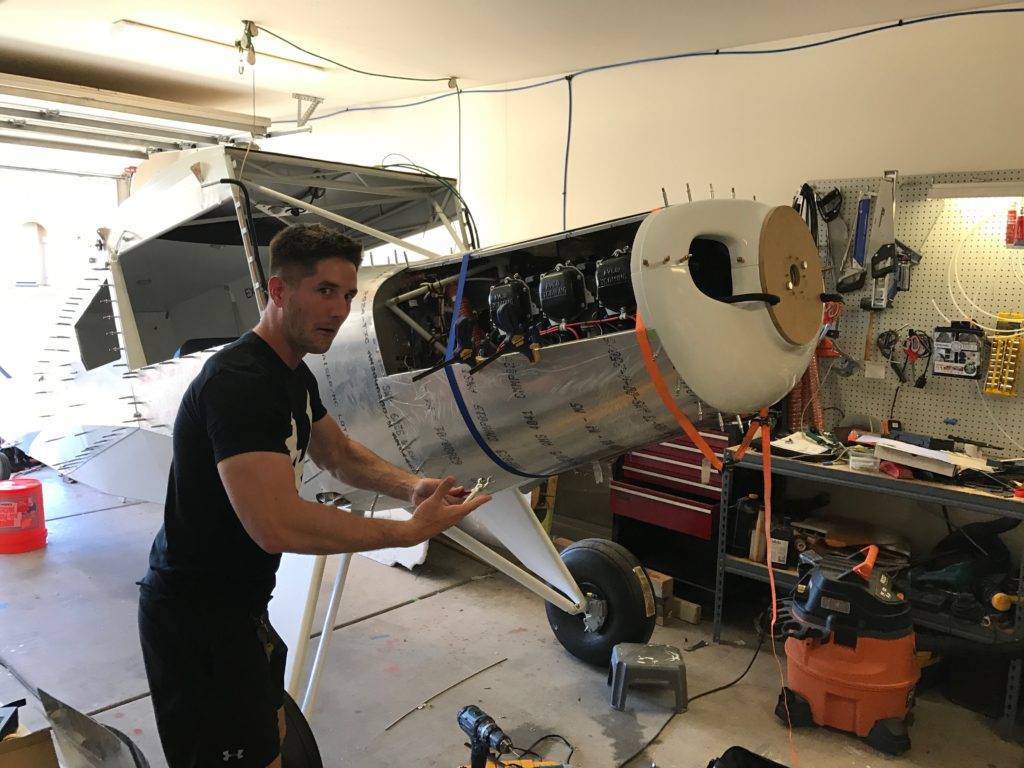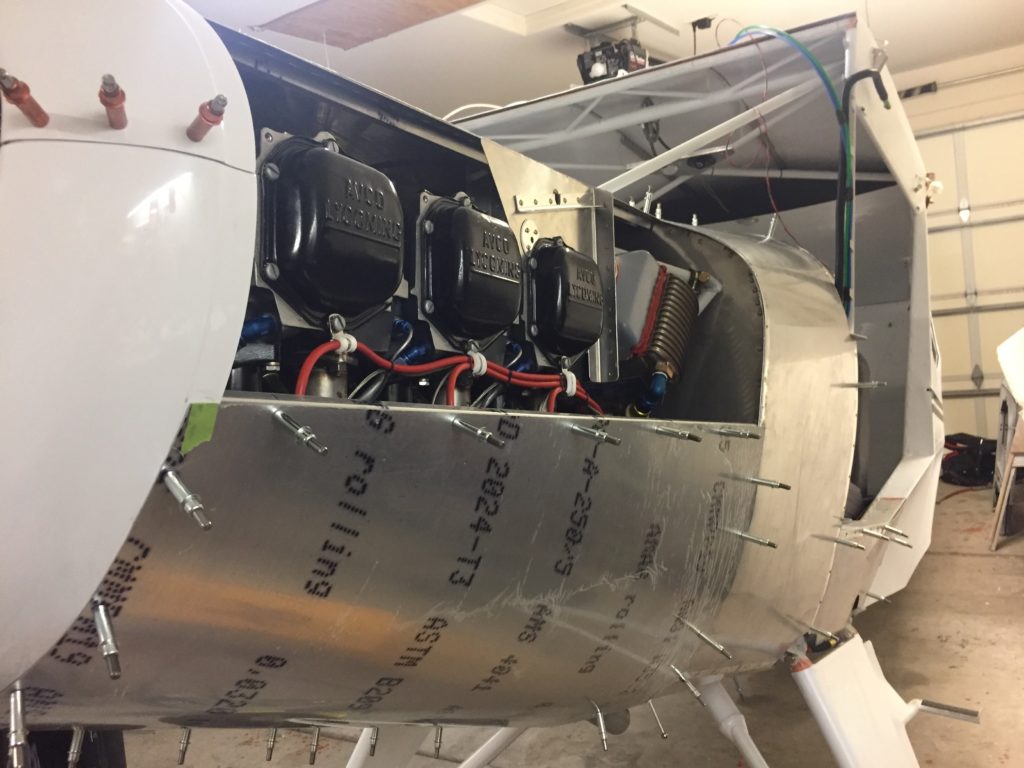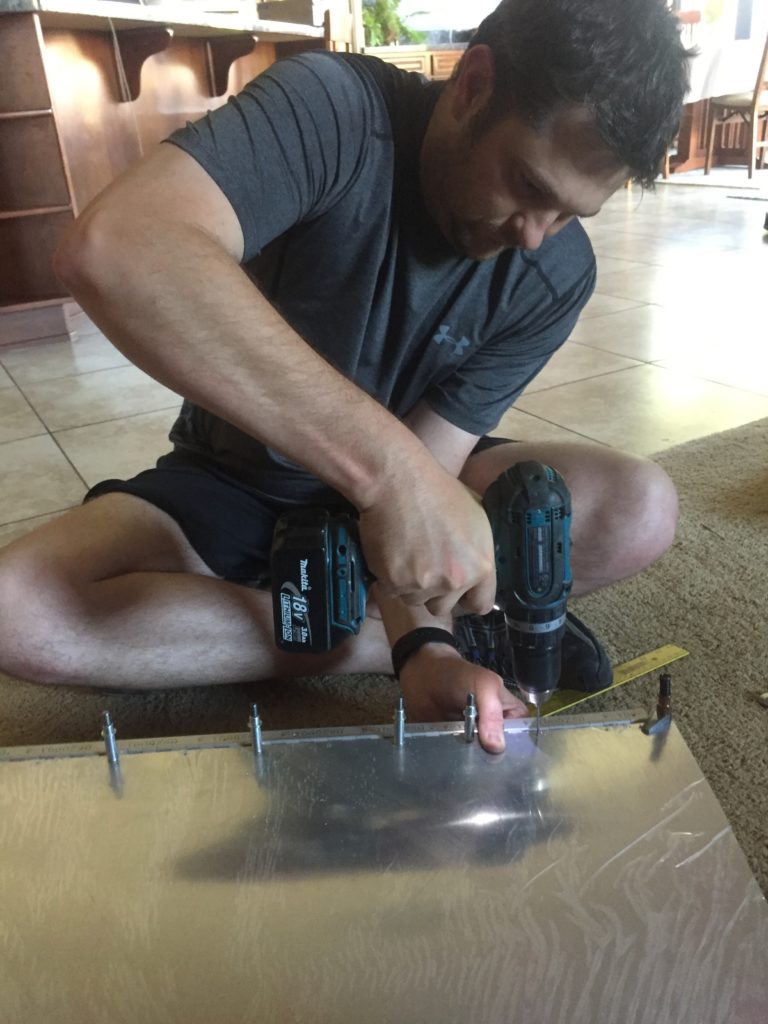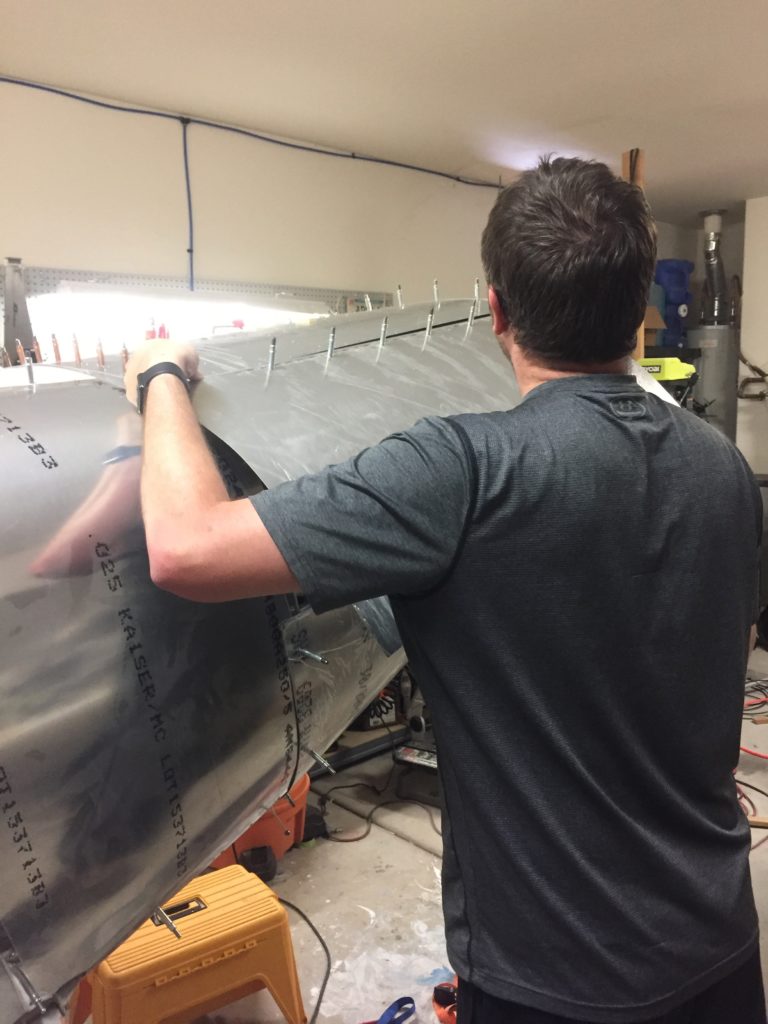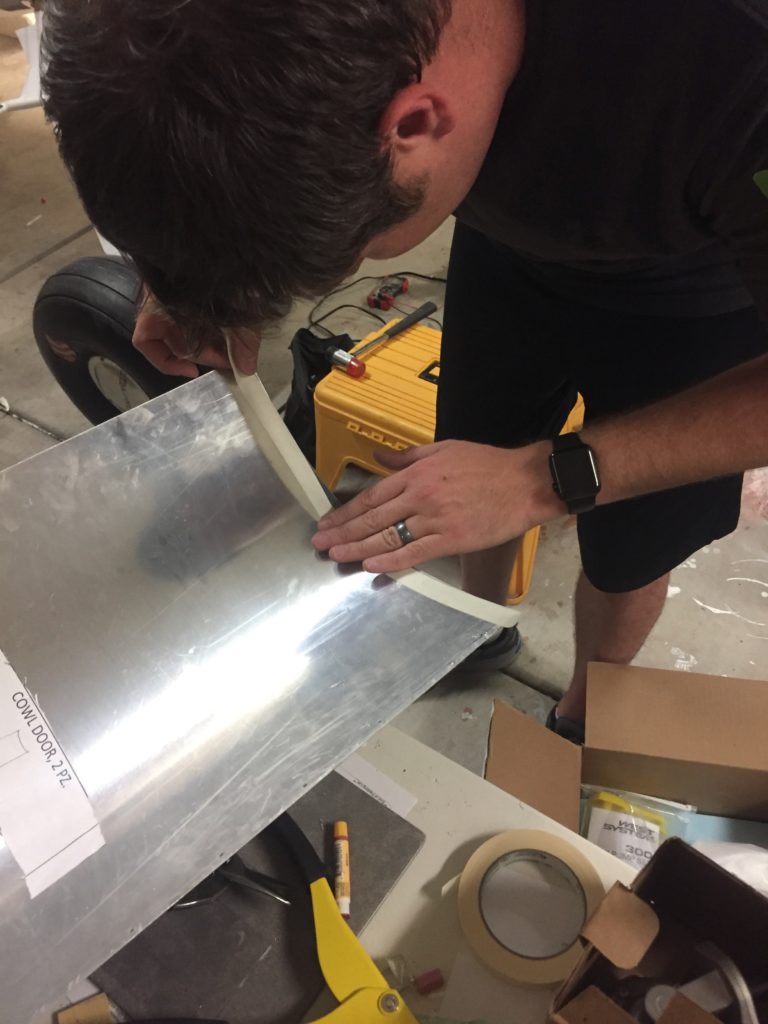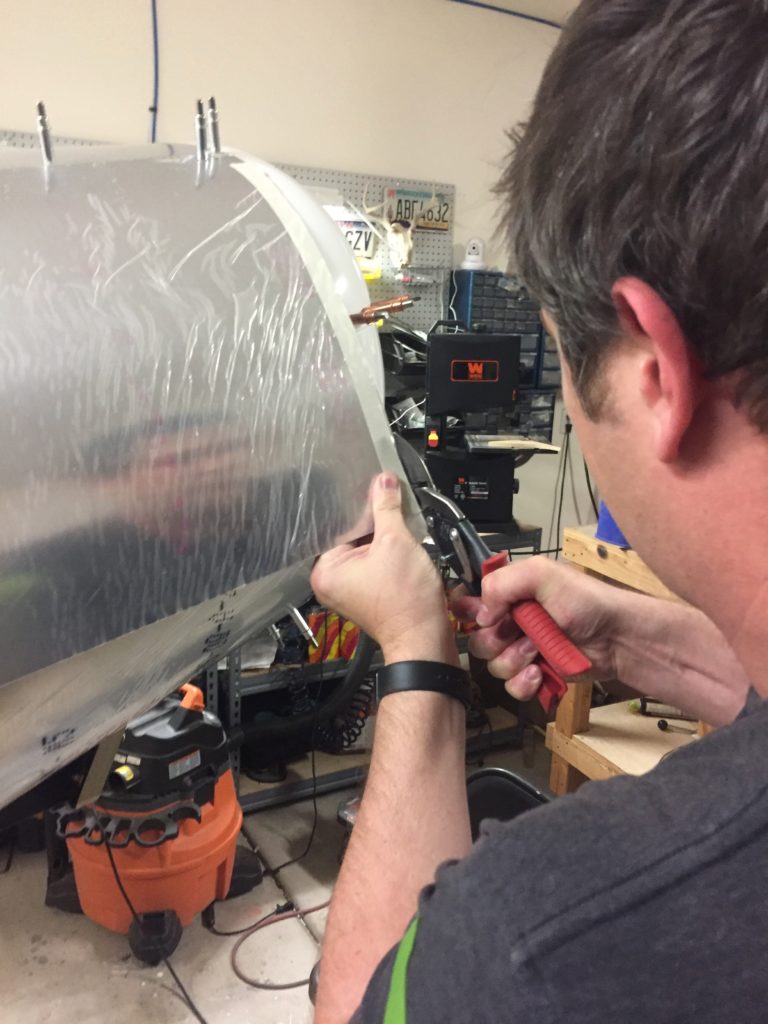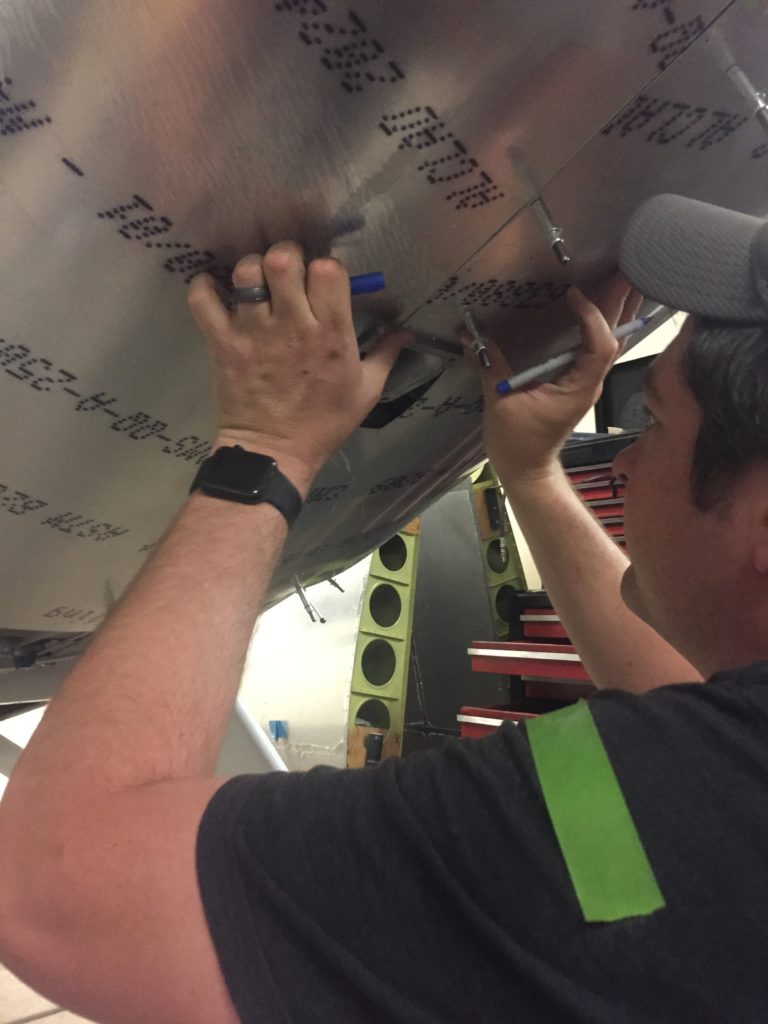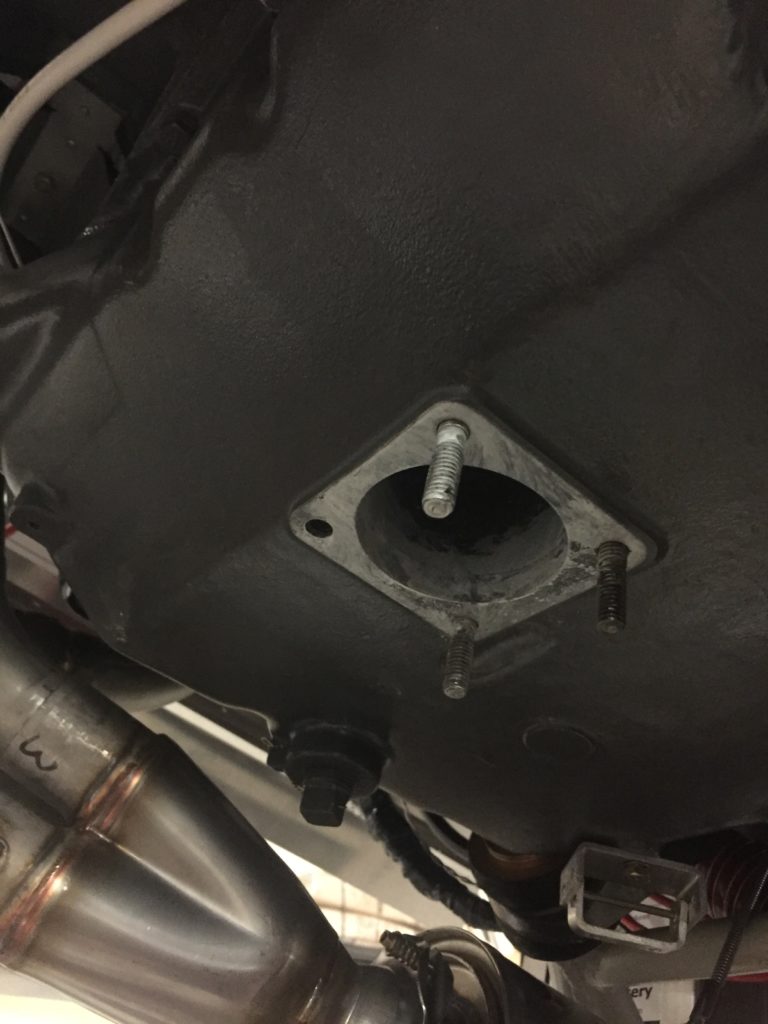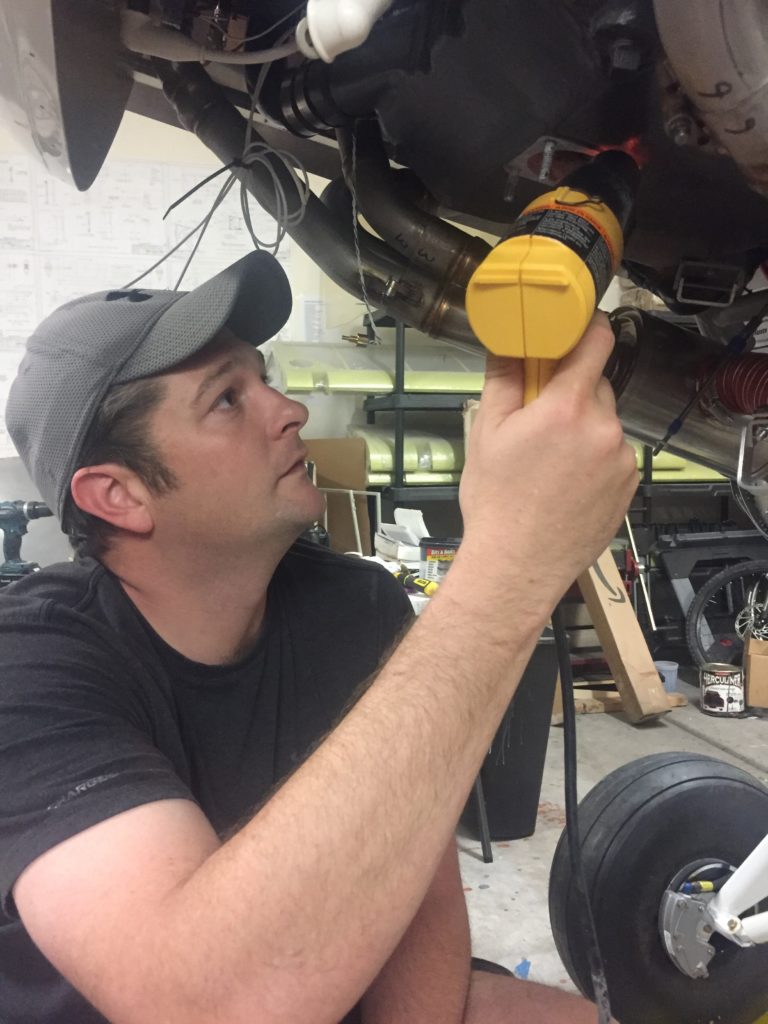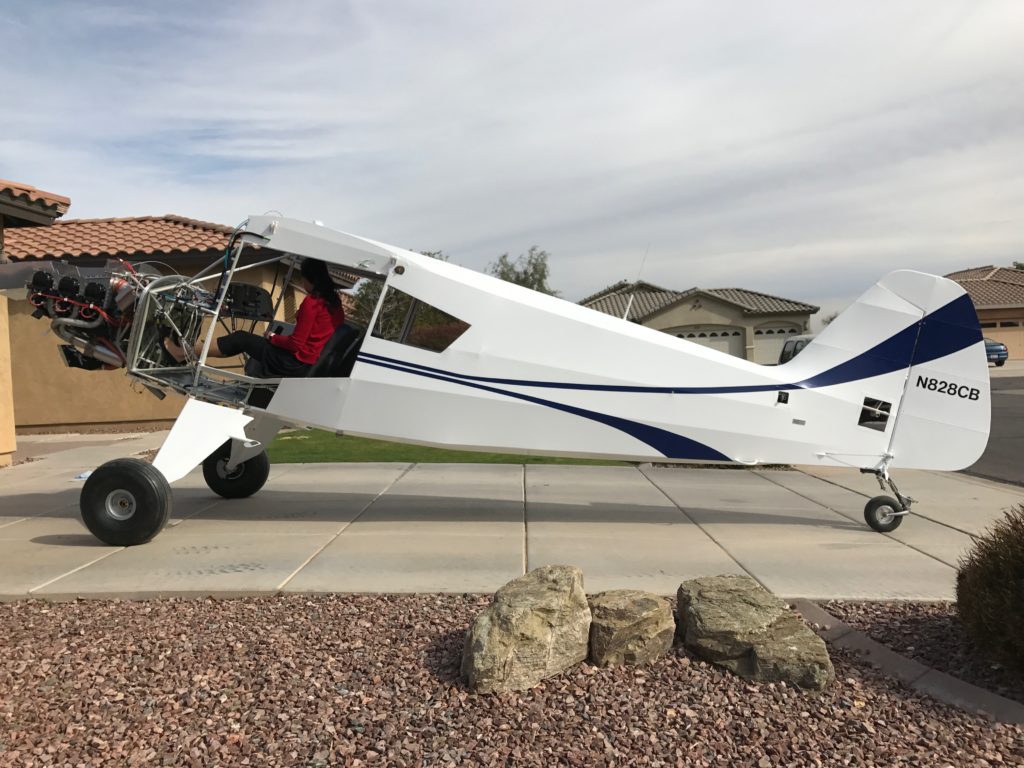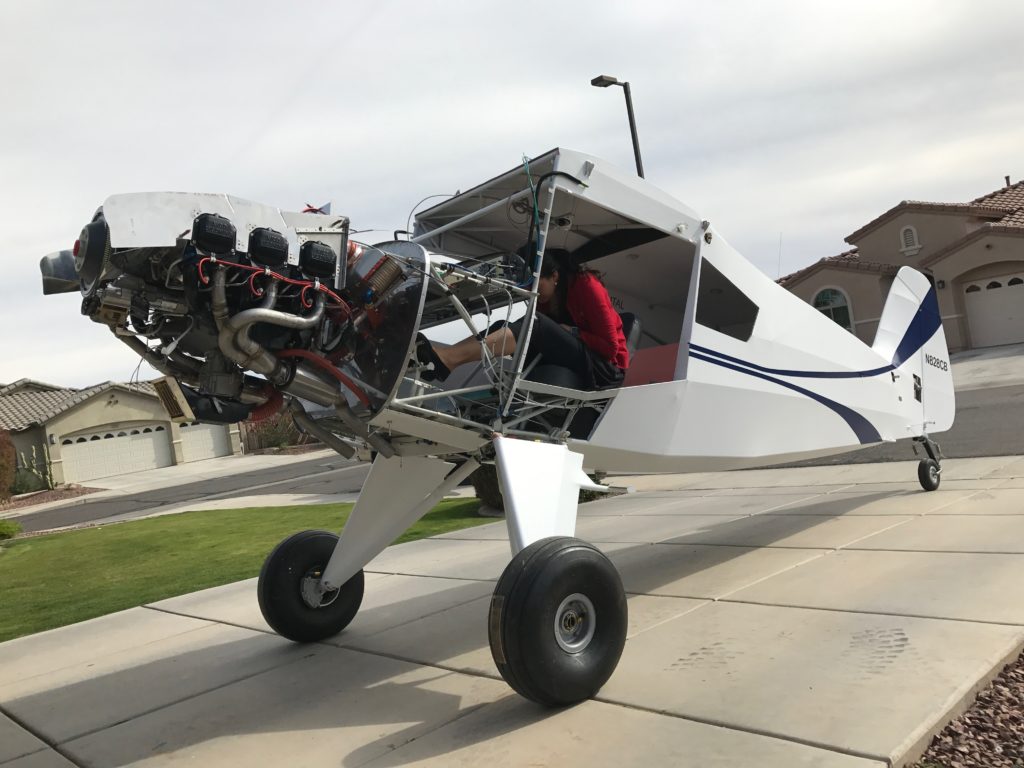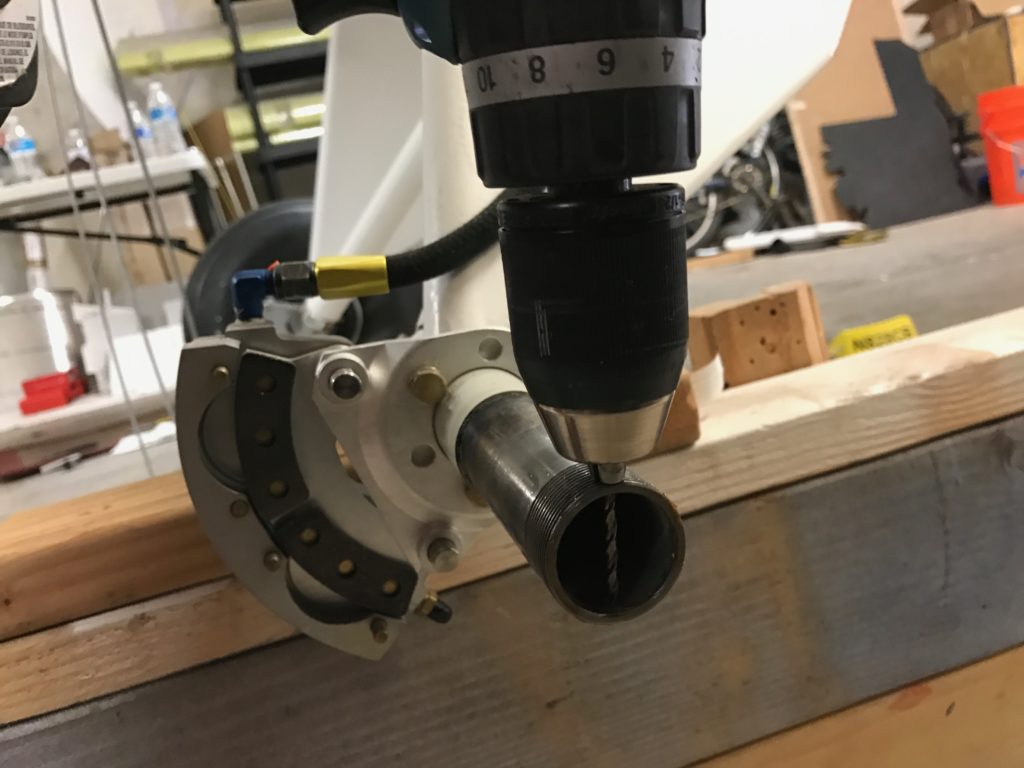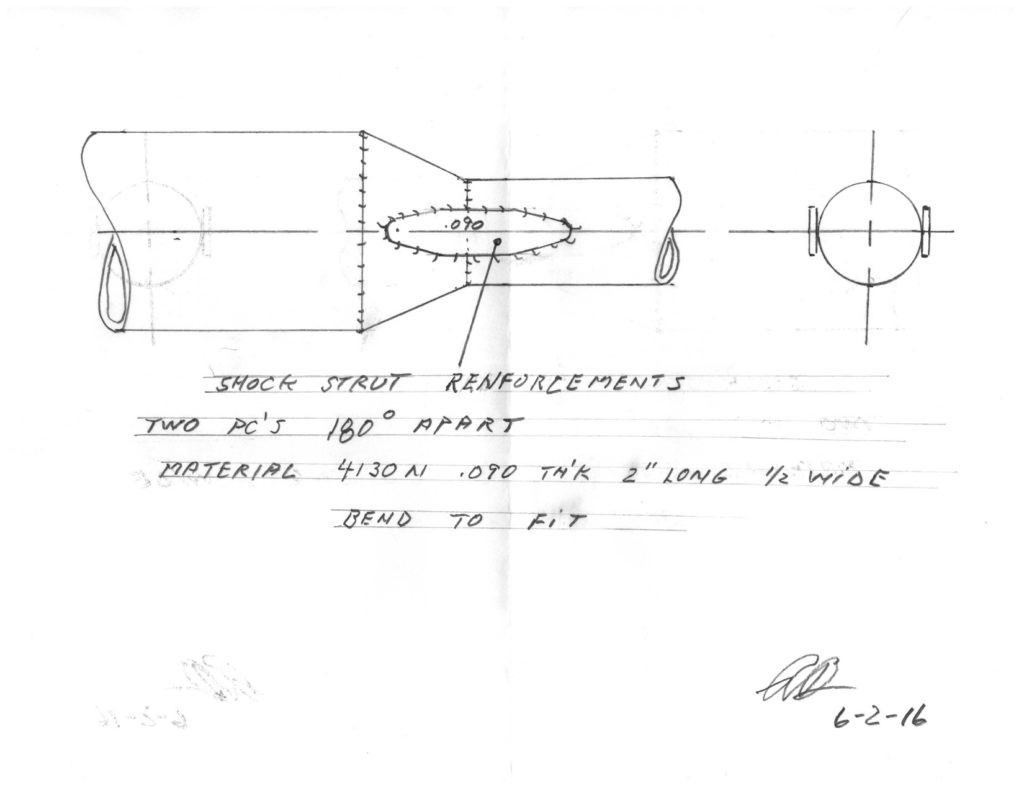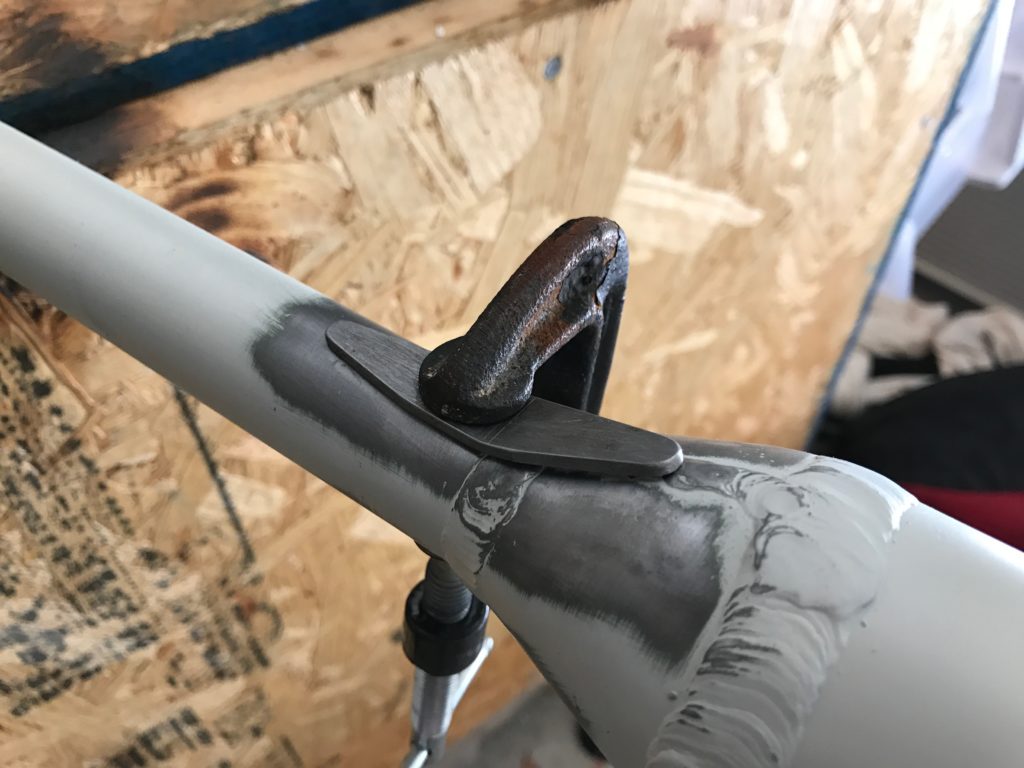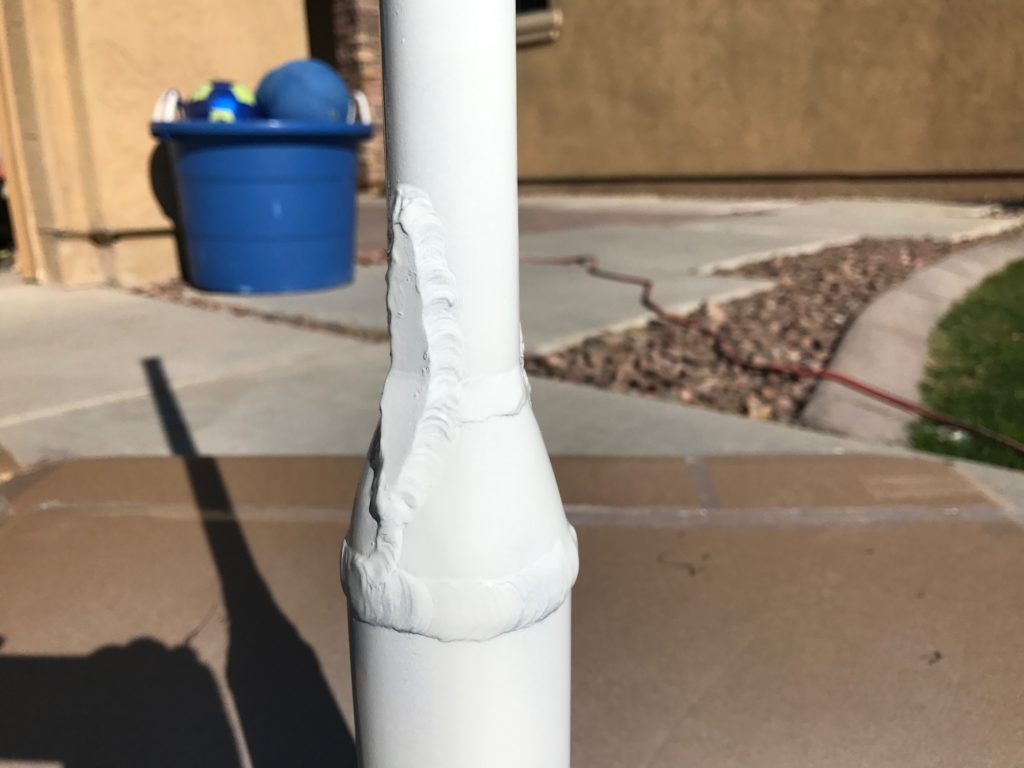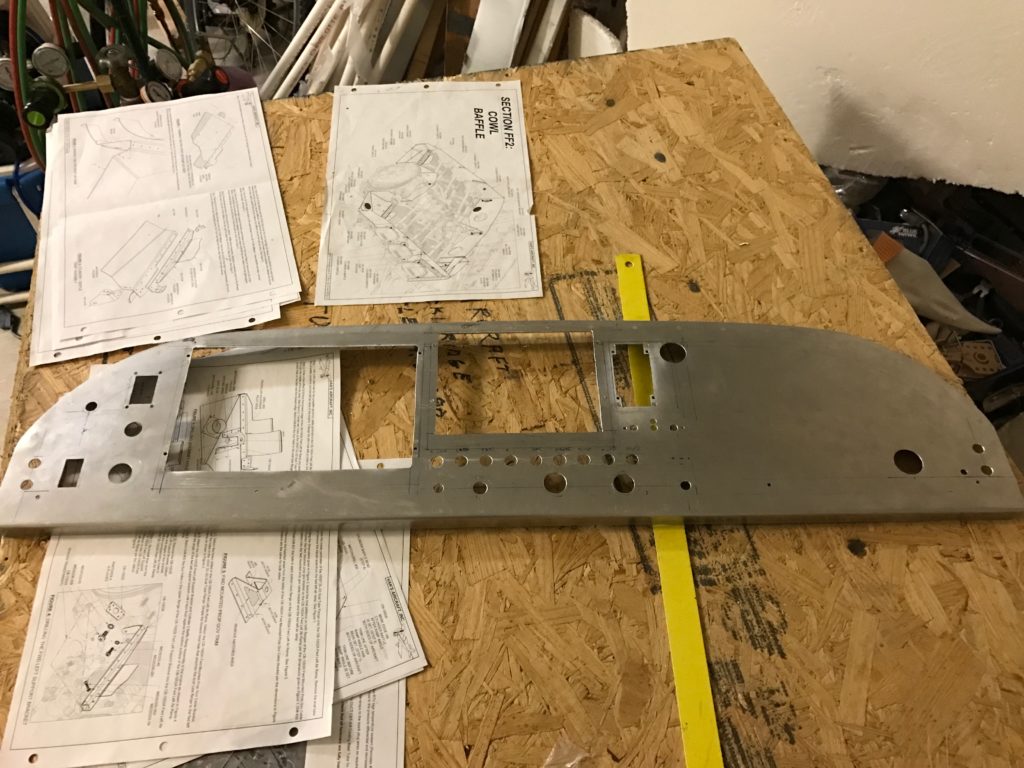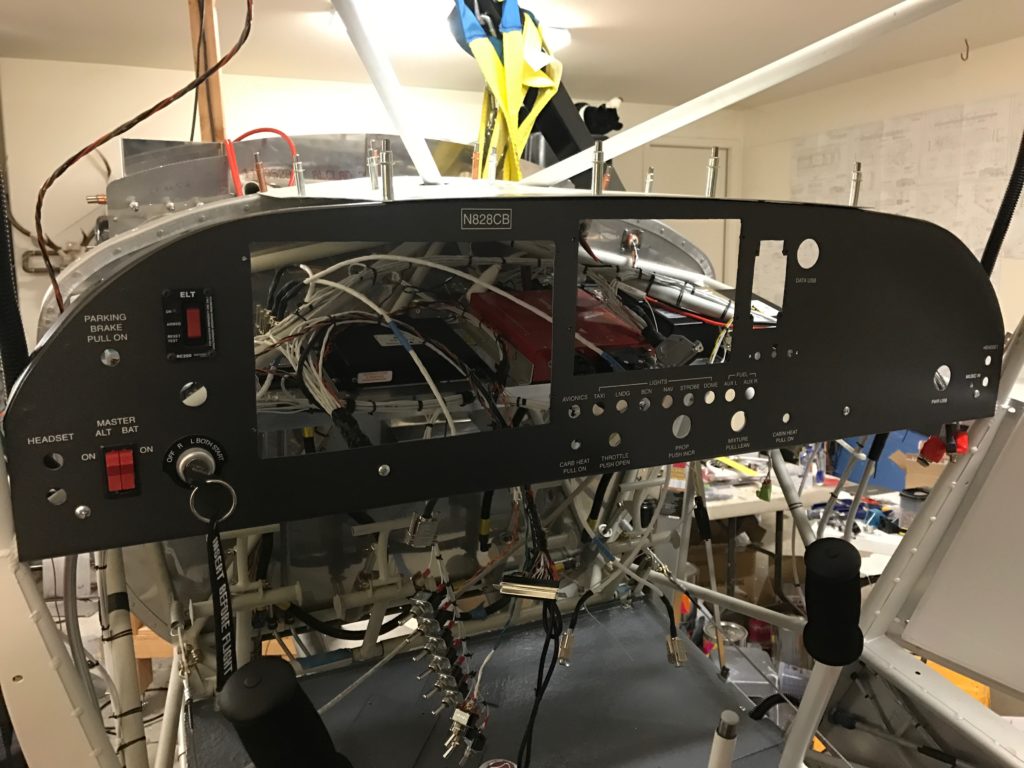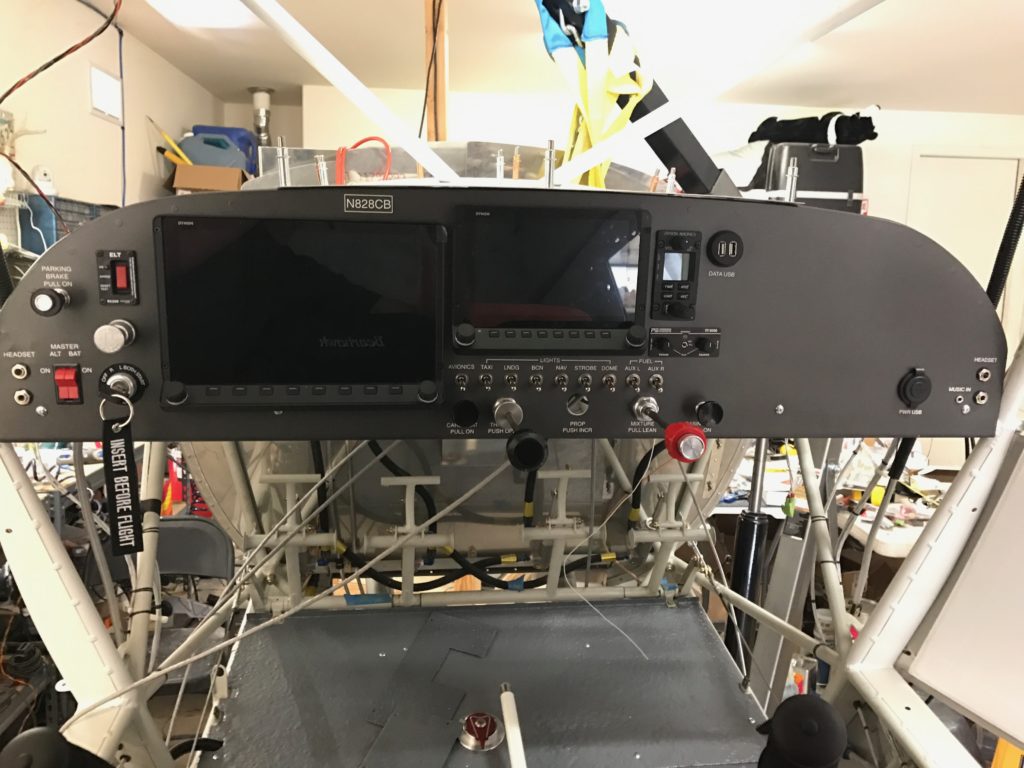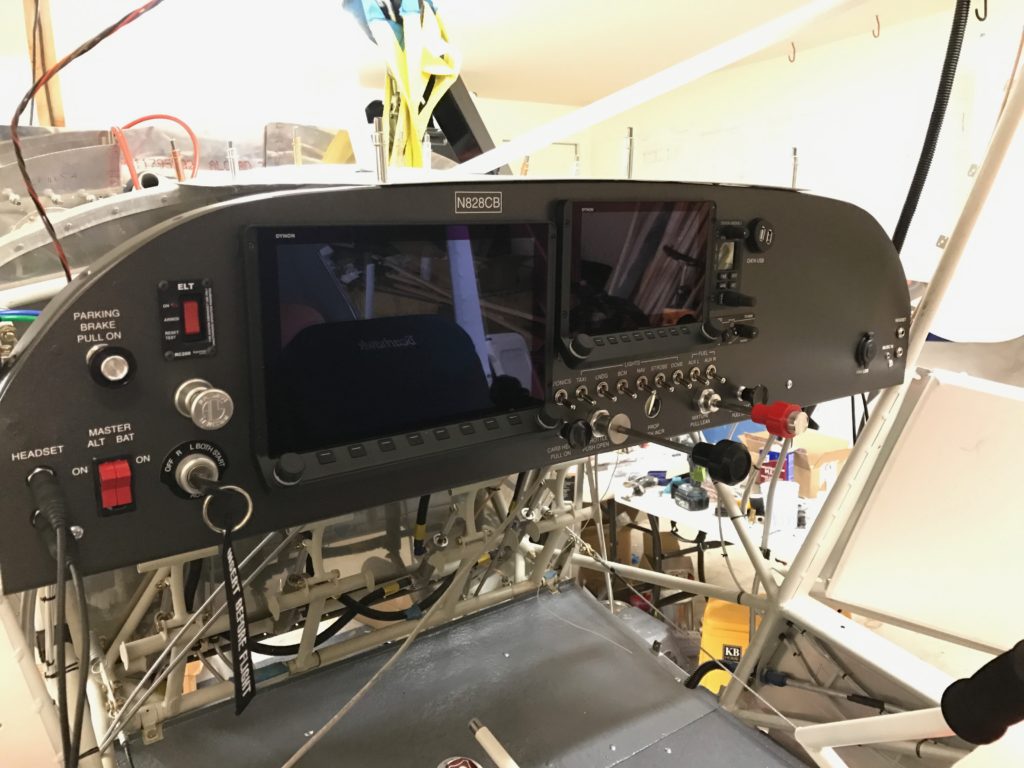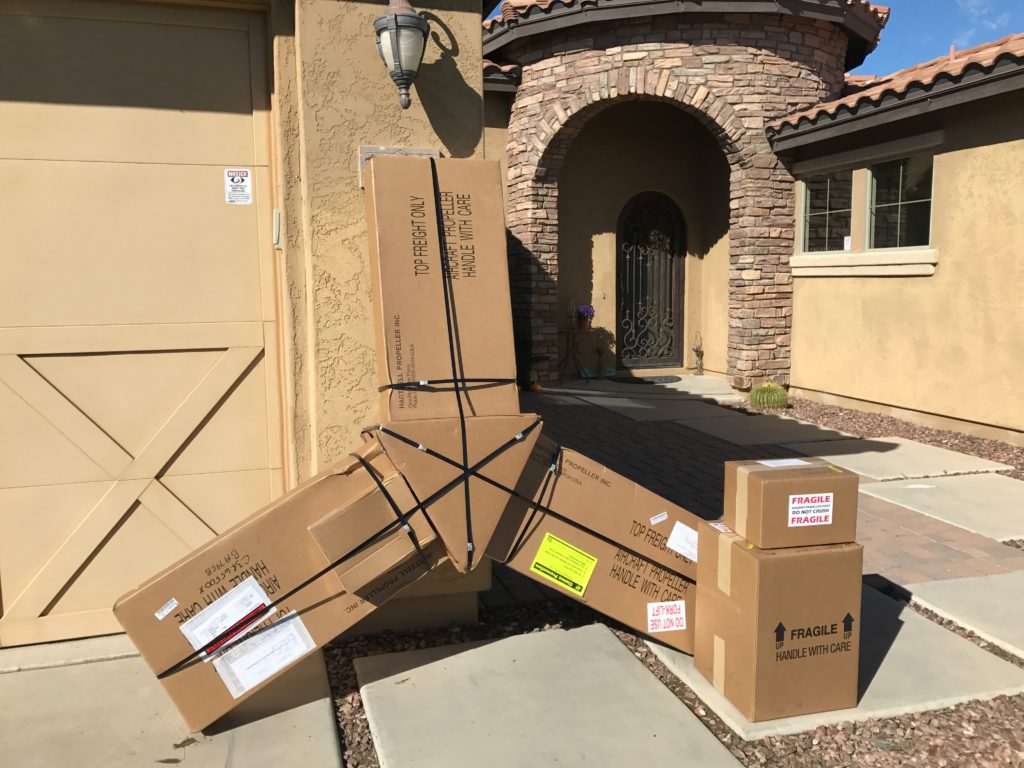
Look what’s in my front yard!!
We decided on the Hartzell Trailblazer Propeller. It’s an awesome prop!
So the next questions was, what diameter? Obviously, you want a big prop to help you get off the ground, but clearance is a consideration. There’s also the issue of supersonic tips at 2700 RPM. After talking with Mark Goldberg and the Hartzell reps, we decided on an 82″ prop.
I did some calculations, an 82” prop tip travels at 658 MPH @ 2,700 RPM. I’d have to get to 35,000 ft msl before the prop tips go supersonic. At sea level the speed of sound is 761 MPH. So, it looks like I’ve got a good margin.
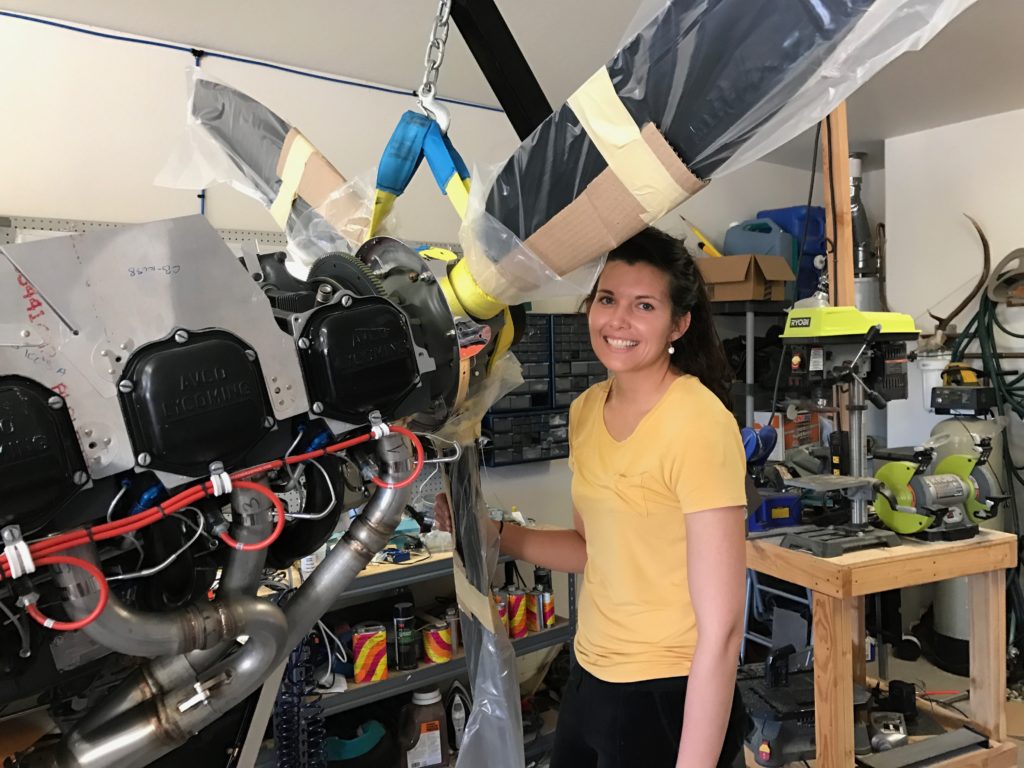
My beautiful wife helped me hang the prop today!
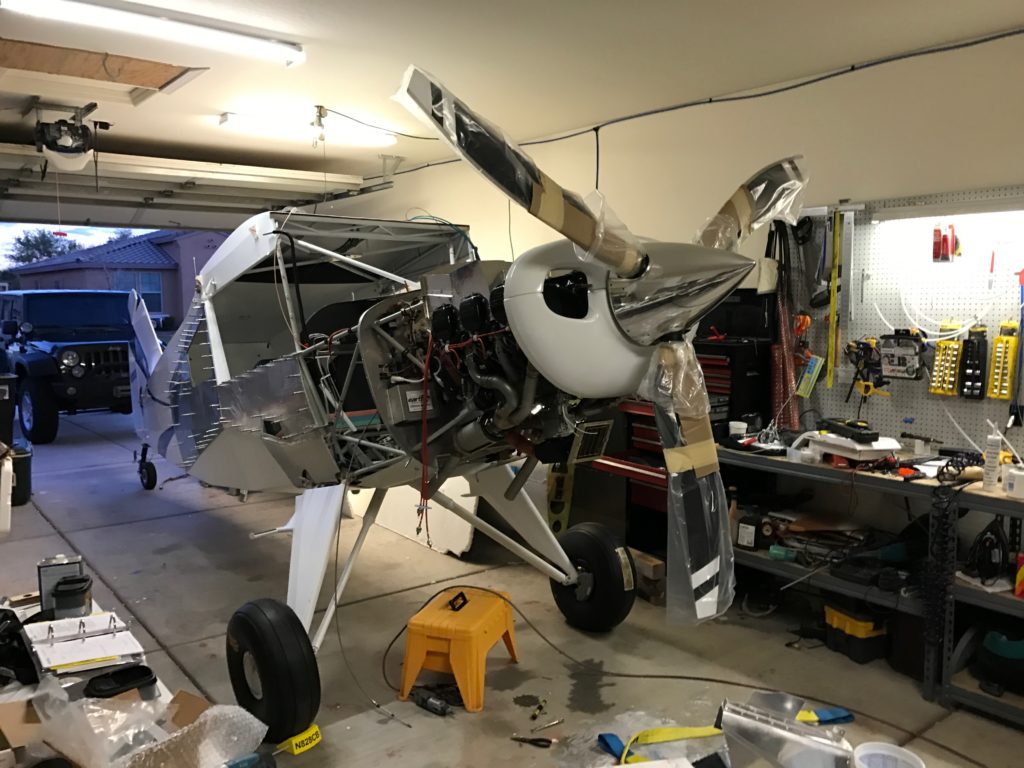
And the real reason we’re hanging the prop now is to get the measurements for where the nose bowl will sit. Now that we have the spacing between the spinner and the nose bowl, we can start on the cowling!
